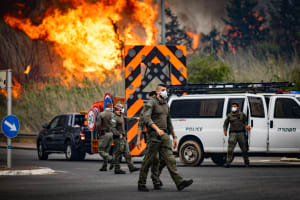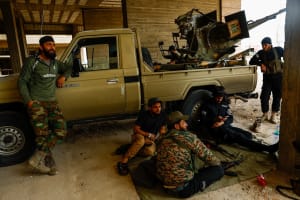Iran’s failed imperial plans in Syria revealed in document
Iran regarded Syria as a strategic link in its plan

The Islamic Republic of Iran’s grand imperial ambitions in Syria were articulated in a 33-page Iranian study dated May 2022. The secret document was discovered after the Iranian embassy in Damascus was looted in December 2024.
The Iranian plan was reportedly inspired by its American adversary’s rebuilding of post-war Europe through “The Marshall Plan.” The Iranian plan in Syria, which was led by the Islamic Revolutionary Guard Corps (IRGC) official Abbas Akbari, claimed that the Marshall Plan made Europe “reliant on America” by “creating economic, political and socio-cultural dependence.”
Based on its interpretation of the Marshall Plan, the ayatollah regime ironically aimed to accomplish similar Iranian dominance over Syria and other parts of the Middle East, including Iraq, Yemen, Lebanon and Gaza. The imperial plan in Syria eventually failed with the collapse of the Assad regime in December 2024.
The heavy losses sustained by Hezbollah – Iran’s powerful terror proxy in Lebanon – after more than a year of war with Israel reportedly played a central role in weakening, and ultimately toppling, the Assad regime, which had depended on support from both Iran and Hezbollah. However, local corruption in Syria, mismanagement and international sanctions were all crucial factors that undermined Tehran’s imperial plans in Syria.
“Syrian banks’ failure to pay Iranian companies is discouraging investment,” Akbari’s agency wrote in a letter to Iran’s ambassador in Damascus following complaints from businesses in Iran that lost their investments in Syria.
The goal of the Iranian imperial plan was reportedly to transform Syria into Tehran’s most lucrative satellite state in the Middle East. Iran invested billions of dollars into the imperial project that ultimately failed. Ex-Iranian lawmakers have estimated that the Assad regime’s debt to Tehran exceeded $30 billion.
At the same time, Iran is facing a weak domestic economy and growing internal protests against the ayatollah regime’s politically and economically oppressive rule. Many Iranian businesses reportedly lost substantial investments tied to various unfinished construction projects throughout Syria.
Unlike the former pro-Iran Assad regime, the current Syrian Islamist regime, led by Ahmed al-Sharaa, opposes Iranian imperial ambitions and embraces an alliance with Iran’s rival, Turkey.
“The Syrian people have a wound caused by Iran, and we need a lot of time to heal,” al-Sharaa stated in December. The fall of the Assad regime dramatically disrupted the ayatollah’s imperial plans in the Middle East.
Iran regarded Syria as a strategic link in its plan to establish a Shiite imperial corridor stretching from Tehran in the east to the Mediterranean Sea in the west. The Assad regime also played a pivotal role in facilitating the transfer of Iranian arms and funds to Hezbollah.
It is unclear how much money Iran ultimately spent on its failed imperial Syria project, however, the United Nations estimated as much as $6 billion per year by 2015. The Iranian regime has dismissed the figure as exaggerated but has not denied allocating substantial resources to its involvement in Syria.
Syria has also played a key role in Iran’s “Ring of Fire” strategy that aims to surround Israel’s borders with Iran-supported terrorist organizations such as Hamas in Gaza, Hezbollah in Lebanon and other militant groups in Syria.
In January 2025, Israeli commandos raided Iran’s secret missile factory in Syria, which produced crucial weapons for Hezbollah and other proxy groups. At the time, former IDF Chief of Staff Lt.-Gen. Herzi Halevi explained the importance of striking Iran’s military assets in Syria.
"Iran established for years a ring of fire and missiles on the borders of the State of Israel, and we hit both the ring and the head," Halevi said.

The All Israel News Staff is a team of journalists in Israel.














